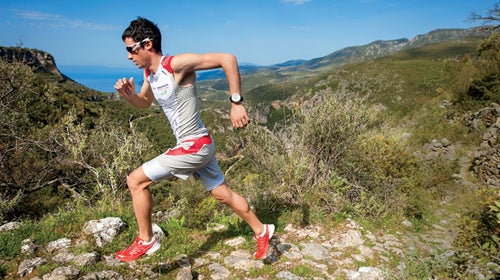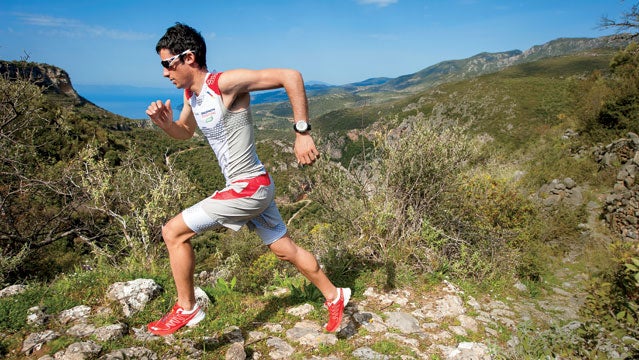Last week for the 100-mile run when he ran just under twelve hours (11:59:28) on the track. His last marathon (26.2 miles) of the 100-miler was run in less than 3:10! The International Amateur Athletic Federation (IAAF) only recognizes world records up to 100 km (a little over 62 miles), and the best time for 100 miles is 11:28:03 by . Olsen’s average pace was just under 7:12 per mile, Kharitonov’s was just under 6:53.
How are these men and women doing it—running great distances at unimaginable speeds—and is there something special about their physiology?
Everything Except Physiology
There’s more to running an ultra than just endurance. Yes, anyone who finishes an ultra-endurance race must be able to handle high-volume training. But they also have to master the logistics related to fluid and feeding management, equipment, and rest. For some events a support team is required. And for many events, environmental conditions and the course itself are a major part of the challenge.
Physiology: The same or different?
All of this has led to a lot of speculation about whether the physiological determinants of performance at ultra-endurance events . For ultramarathons, one idea is that . Surprisingly, inefficient running form may lead to less mechanical wear and tear, allowing these athletes to succeed when the distances increase.
Who Sets Records?
One interesting thing to consider is who sets records in these events. by Takahiro Sunada of Japan. Sunada has run the standard 26.2 mile distance in 2:10. He’s clearly an exceptional athlete across distances. The story is the same for women. From what I could glean, . Historically iconic ultra-runners like , , and Barney have all been superb marathoners with personal records under 2:20.
Same Story for Swimming
The same trend also holds for swimming. The fastest crossing of the English Channel (6hrs 55min) was done in 2012 by the . Grimsey just missed making the Australian Olympic Team at 1500m in 2008 and his personal best is an impressive 15:12. The women’s record is 7hrs and 25 minutes held by who was also outstanding at shorter distances.
Moving Up Is Hard to Do
These examples all suggest that when fast people move up to longer distances they seem to do very well. And empirical data backs up these observations. When a sample of 93 recreational male ultra-runners was evaluated, their marathon times were strong predictors for their 100 km times:
Results of the multiple regression analysis revealed an independent and negative association of weekly running kilometres and average speed in training with race time, as well as a significant positive association between the sum of eight skinfold thicknesses and race time. There was a significant positive association between 100-km race time and personal best time in a marathon. We conclude that both training and anthropometry were independently associated with race performance. These characteristics remained relevant even when controlling for personal best time in a marathon.
People who did more weekly training, did it faster, and were skinny had faster marathon and 100 km times. This type of data also suggest that the basic physiology of who does well at events as short as 15 minutes applies to ultra-races. I wonder how the East Africans would do if they “moved up.”
And it also suggests that ultra-racers should consider moving down when training to incorporate intervals and even shorter races. Evidently Jon Olsen ran a 1:18 half marathon to get ready for his record attempt.
Ultra-athletes are a mentally tough and highly motivated group who do extremely challenging things. What is special about them .
Michael J. Joyner, M.D., is a physiologist and anesthesiologist at the Mayo Clinic and a leading voice in the world of exercise physiology. Over the last 25+ years, he's published 100s of studies many of which have focused on how humans respond to exercise. Dr. Joyner also writes at . The views expressed in this post are his own and do not reflect those of his employer.


